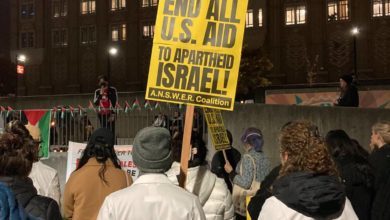
In 2018, in the firstline Seattle suburb of Shoreline, Washington, the school district opened a new Early Learning Center, named after the late Shoreline resident Edwin Pratt. The choice to name the center after Pratt came as a result of a campaign spearheaded by a 10-year-old district student, “Sarah,” (family prefers her full name not be used in media) who noticed a small memorial plaque in a city park and took the time to look up Pratt’s history. The young student collected signatures and attended meetings to make a case for naming the new center after Pratt, who, she pointed out should be a role model for all Shoreline students.
Who was Edwin Pratt?
Pratt was born in 1930 in Miami, Florida. He earned his bachelor’s degree from Clark College in Atlanta, Georgia and his Masters in Social Work from Atlanta University. He served as the Executive Director of the Urban League of Seattle during the 1960s. He was an active participant in the civil rights movement in Seattle, as one of the members of the Central Area Civil Rights Committee. The CACRC organized the 1966 school boycott against school segregation in Seattle, as well as taking a leading role in fighting against racist policing. (Jennifer Taylor, The 1965 Freedom Patrols & the Origins of Seattle’s Police Accountability Movement, Seattle Civil Rights and Labor History Project)
CACRC also played a role in putting an Open Housing initiative on the Seattle ballot in 1964 which was defeated after a racist backlash against organizers. Following the defeat of the initiative, the struggle against housing segregation intensified with pickets against racist realtor Picture Floor Plans. When the War on Poverty was announced later in 1964, the Urban League under Pratt’s leadership along with the Central Area Community Council formed the Central Area Citizens’ Committee which became the first organization in the U.S. to receive federal funding under the Economic Opportunity Act for anti-poverty initiatives. CACC later became known as the Central Area Motivation Project or CAMP. (Jessie Kindig, CORE and CACRE Campaigns: A Brief History, Seattle Civil Rights and Labor History Project.)
Pratt and his family in 1959 moved to Shoreline, which was then part of unincorporated King County just north of the Seattle city line, becoming the first Black family in Shoreline. On January 26, 1969, he was assassinated on the doorstep of his home, in a case that remains unsolved, though a 2011 investigation by the Seattle Weekly points to the involvement of white supremacists while debunking other theories. In 1976 Pratt’s legacy was honored in Seattle’s Central Area with the naming of Pratt Park and the Pratt Center for the Performing Arts. His funeral at St. Mark’s Cathedral was the largest ever at the church.
Edwin Pratt was part of a multi-faceted movement against racism in 1960s Seattle. The issues on which he and his colleagues organized continue to be flashpoints in the struggle today. In remembering his life and death we have the opportunity to learn about the mechanisms by which housing segregation and discrimination operated historically as well as the continued toxic legacy of that history.
Racially restrictive covenants and redlining
In the Seattle area, as elsewhere in the U.S during 20th century, undeveloped areas were purchased and zoned for residential housing development and the racist trend to attach restrictive “covenants” to the title deeds took hold. The first documented racially restrictive covenant in Seattle was written in 1924. These covenants meant that when someone bought a home they were promising to abide by the restrictions in the covemant if they resold the home. These covenants typically included restrictions on the future use of the property and prohibited the sale of homes to people of color, either by specifying a list of “races” that would not be allowed to buy, or limiting the sale to white people only. Such restrictions were found by the Supreme Court to be unconstitutional in 1948 (Shelley v. Kraemer), however they continued to be upheld by other means including violence and threats of violence, collusion by real estate agents and racist mortgage lending practices known as redlining.(Silva, Racist Restrictive Covenants History, Seattle Civil Rights and Labor History Project.)
The use of racist covenants gained traction following the 1934 Federal Housing Act which itself marked the origin of redlining. To encourage banks to make housing loans during the Great Depression, city maps were created that purported to show neighborhoods that would be “safe” to invest in, which were marked in green; those that were considered risky due to the presence of people of color were marked in red, hence the the term “redlining.” Based on these maps, Black families were denied home loans, and covenants became more popular as developers sought to prevent the integration of the neighborhoods they were creating so as to protect the ability of future buyers to obtain loans and “maintain property values.” (Wikipedia)
While racial restrictive covenants were found legally unenforcable in 1948, they continued to be enforced socially. To this day, these covenants can be found in title deeds for homes all over the Seattle area, even though they are no longer legally enforceable. Redlining in all its permutations continues not only as a reality to this day; the legacy of redlining has had significant ramifications for Black families who have been denied the ability to grow wealth through homeownership. The 1968 passage of title VIII-IX of the Civil Rights Act created more legal clarity around housing discrimination as well as some mechanisms for enforcement of federal fair housing law but the legacy of segregation and discrimination still persists.
Seattle has the reputation today as a center of liberal and progressive politics, but in actuality it remains significantly impacted by institutionalized racism, from policing to the schools to housing patterns–all issues on which Edwin Pratt and his colleagues in the CACRC fought. Following a long history of housing segregation based on redlining and racist covenants, today people of color are being driven out of the Central Area and South Seattle due to skyrocketing increases in rents and home prices along with policies of gentrification in which existing affordable housing is being destroyed to make way for higher cost units.
As the struggle continues to end racist police impunity and to attain educational equity and just and affordable housing in the 21st century, we must recall the history of institutional racism, understand its ongoing practice and uplift the memory of those like Edwin Pratt on whose shoulders we stand today.






